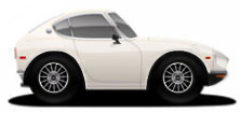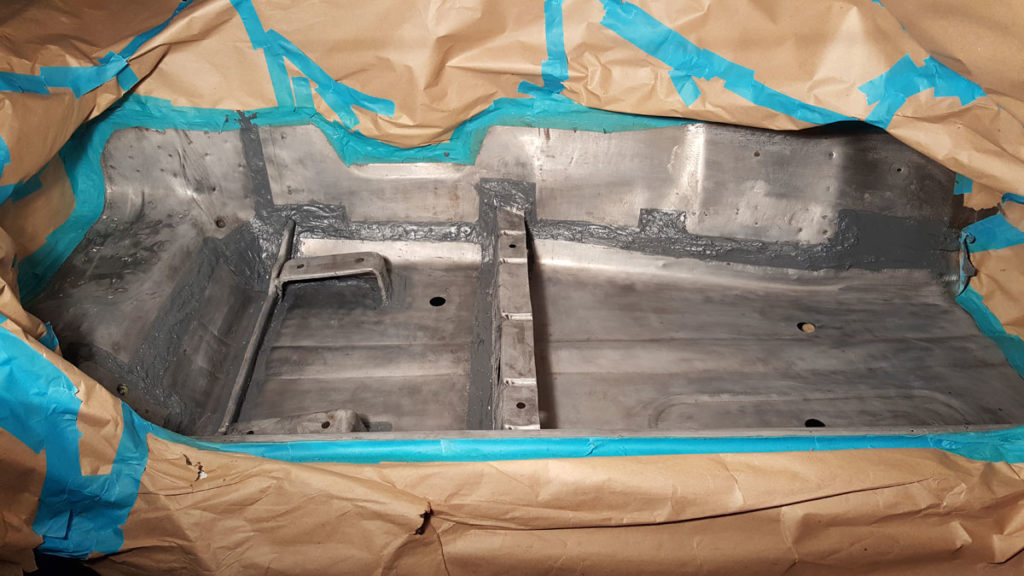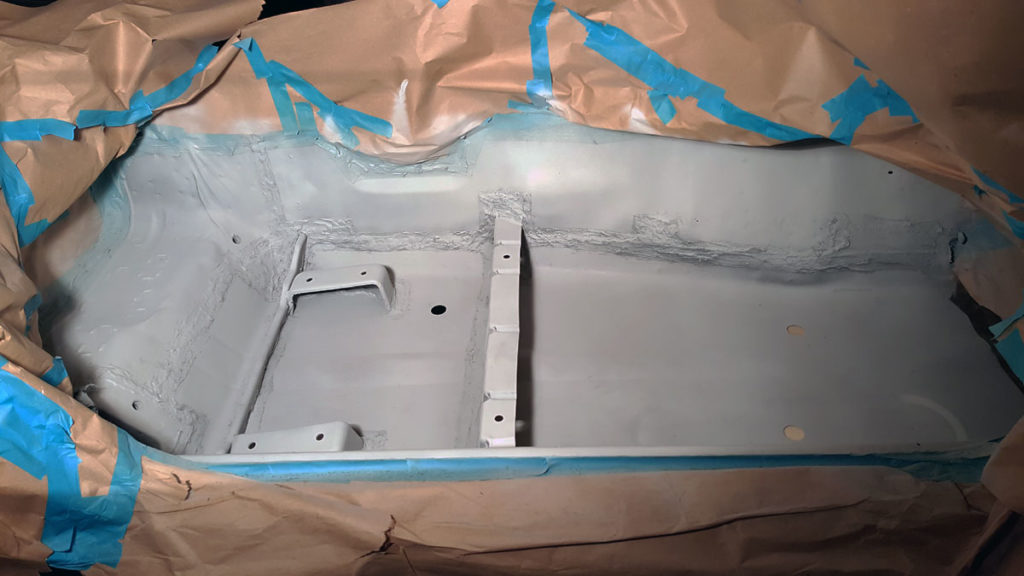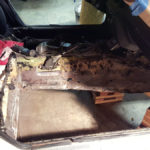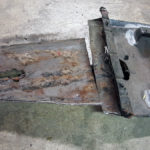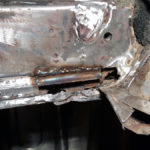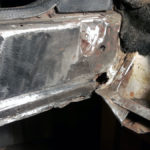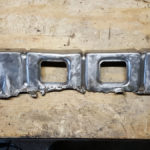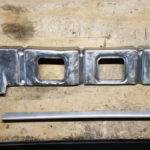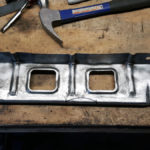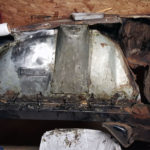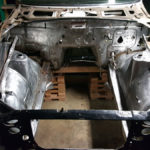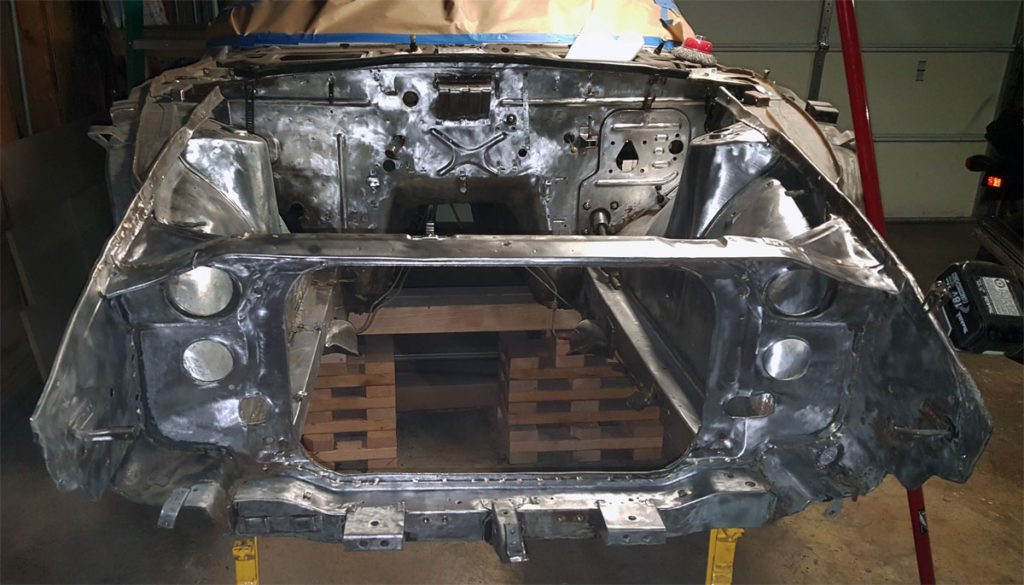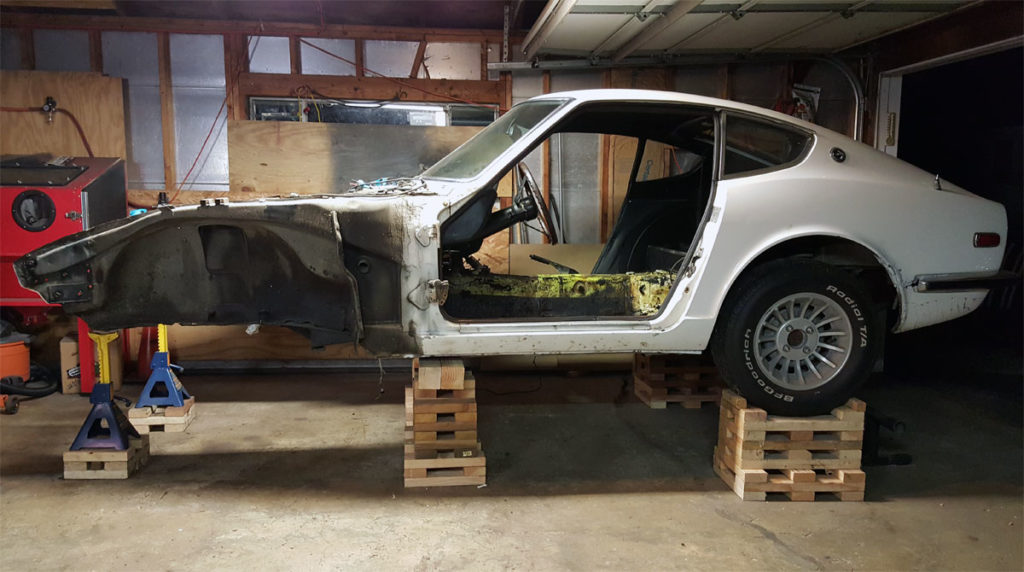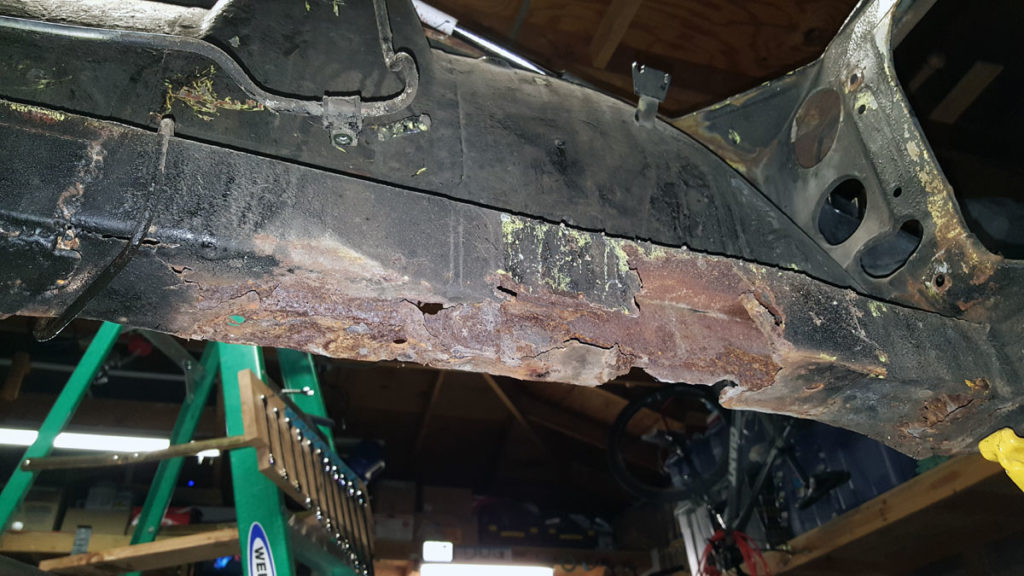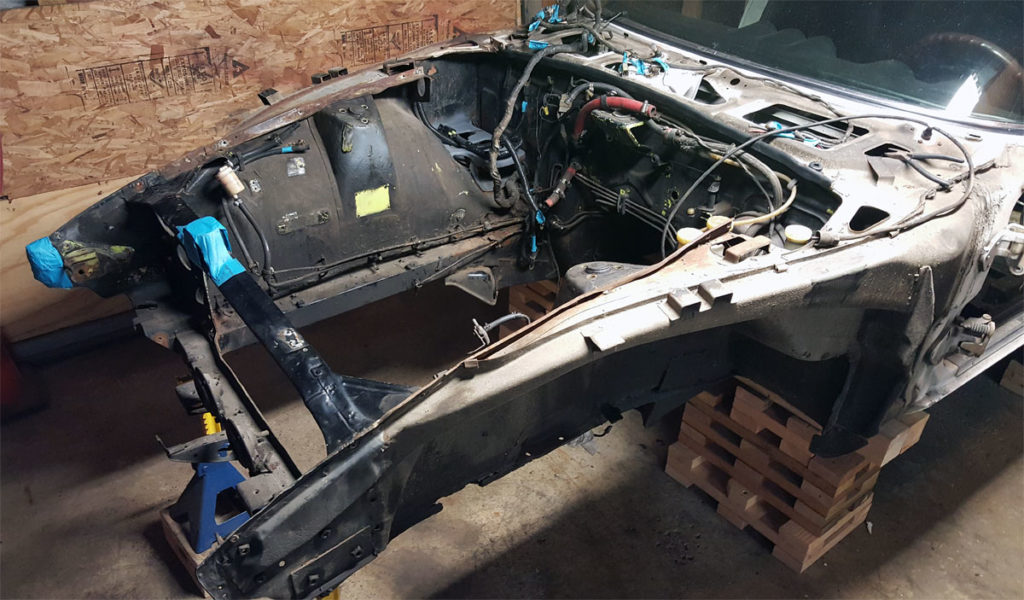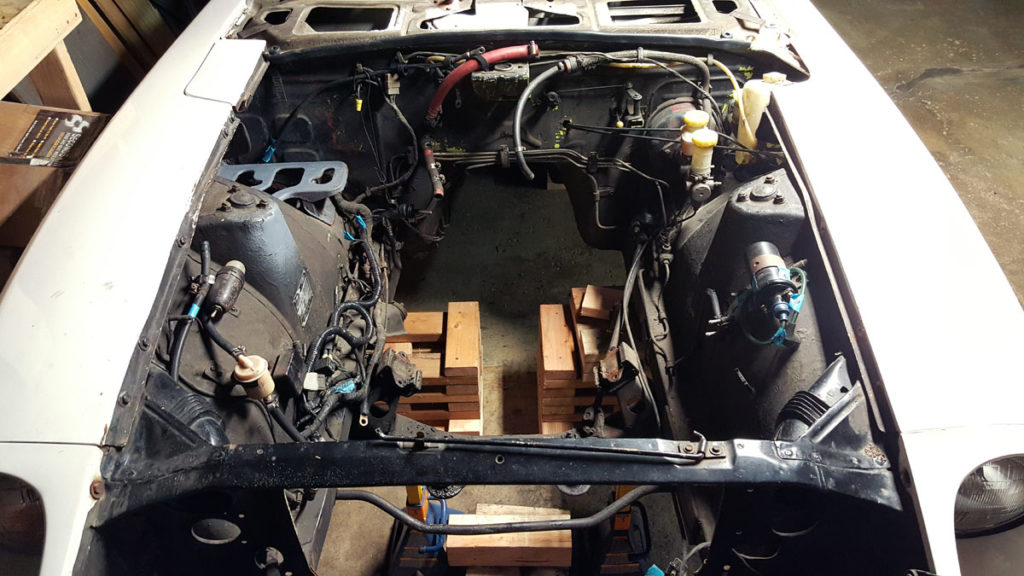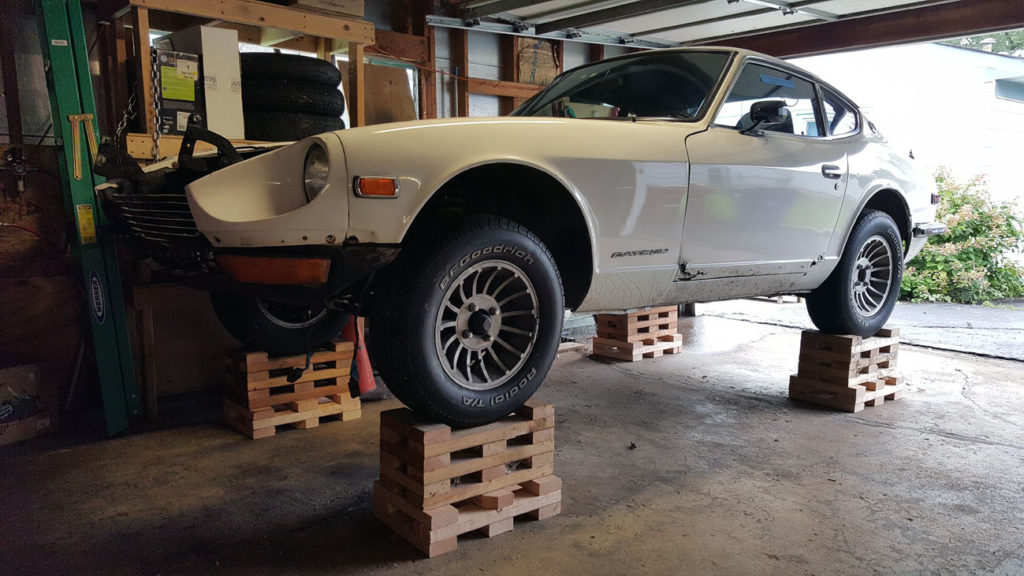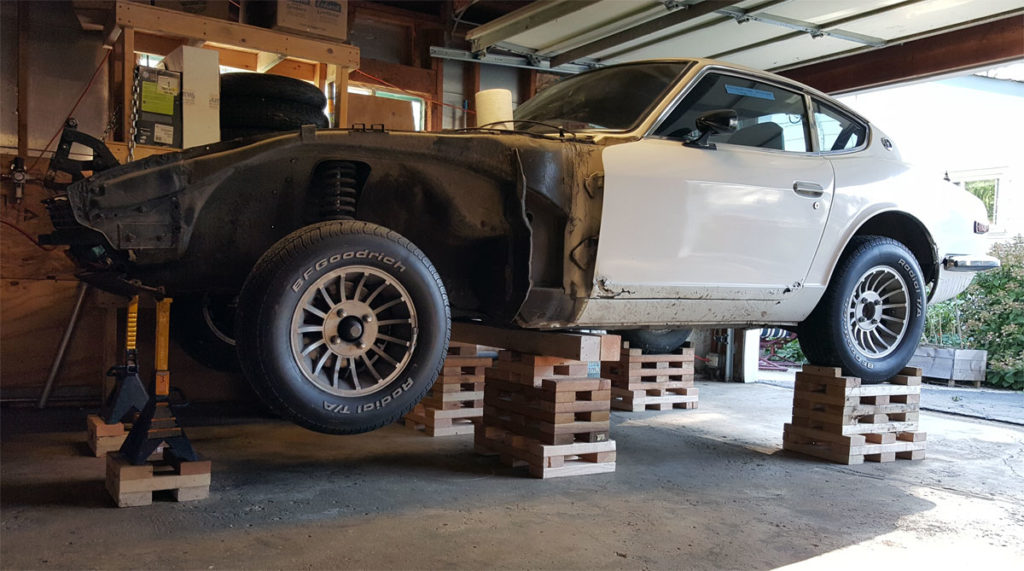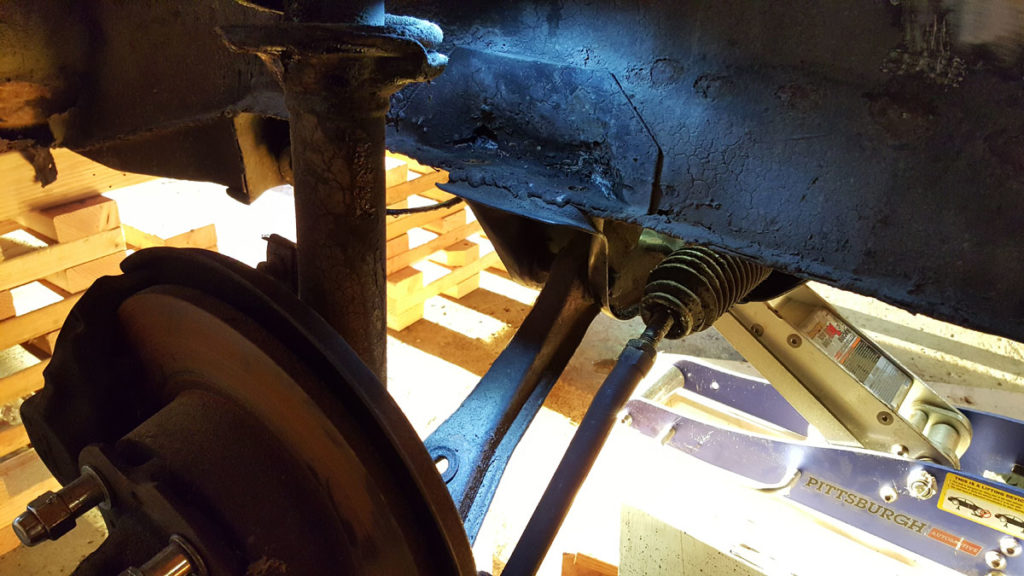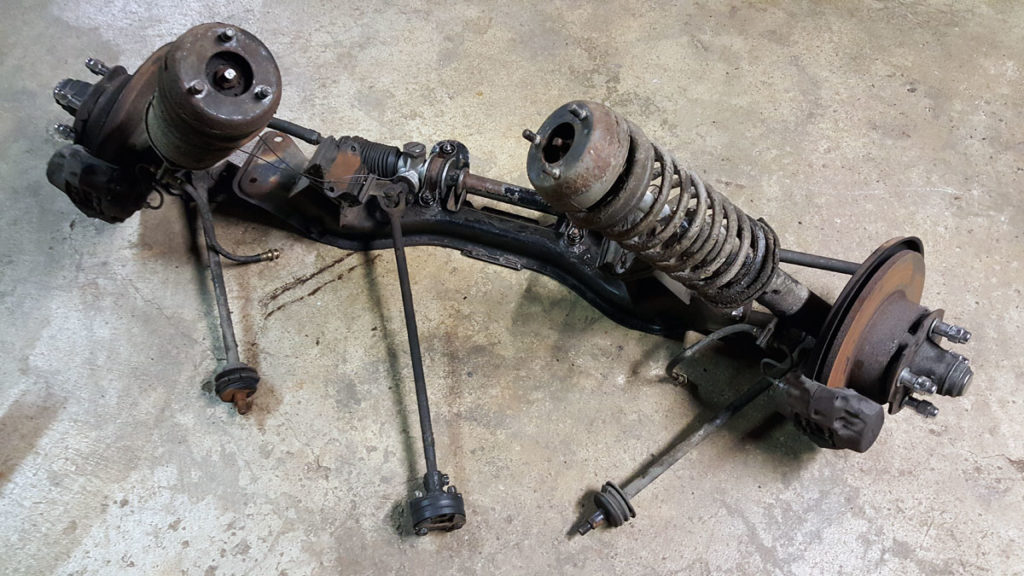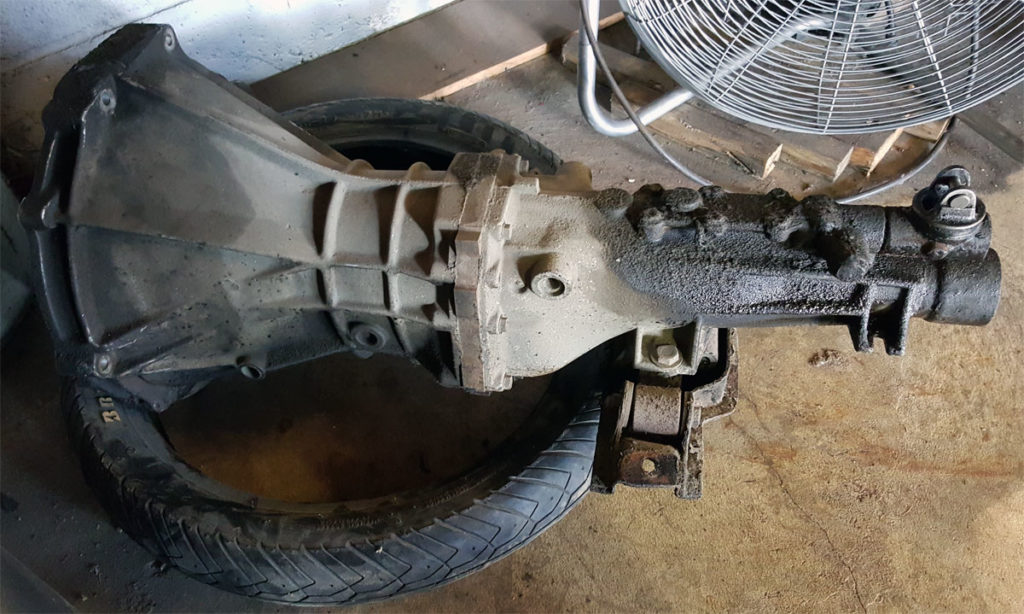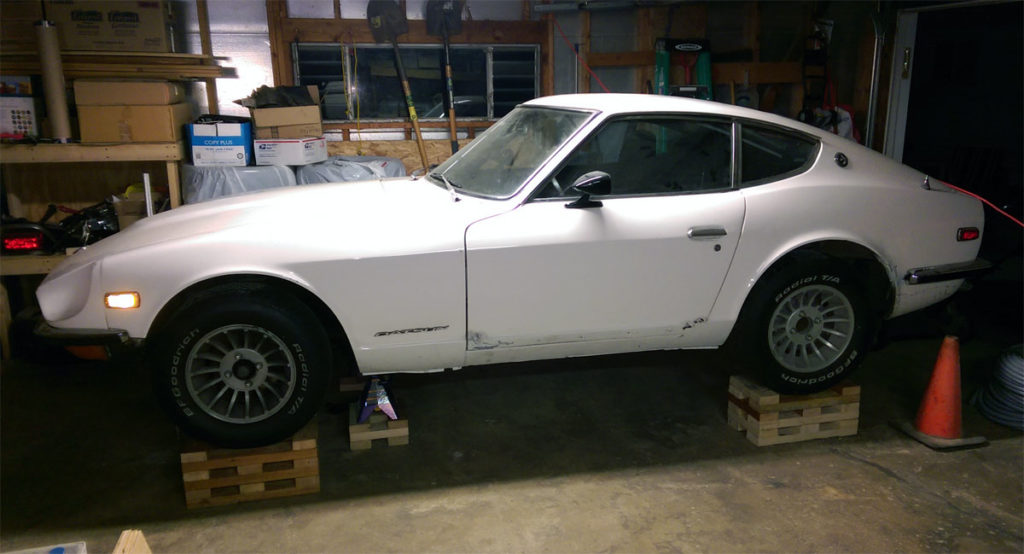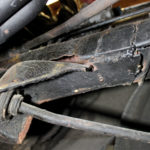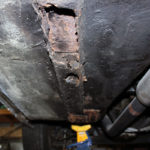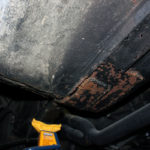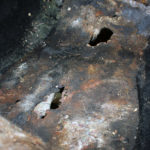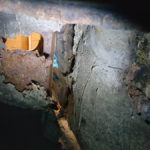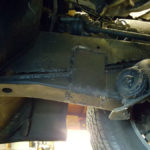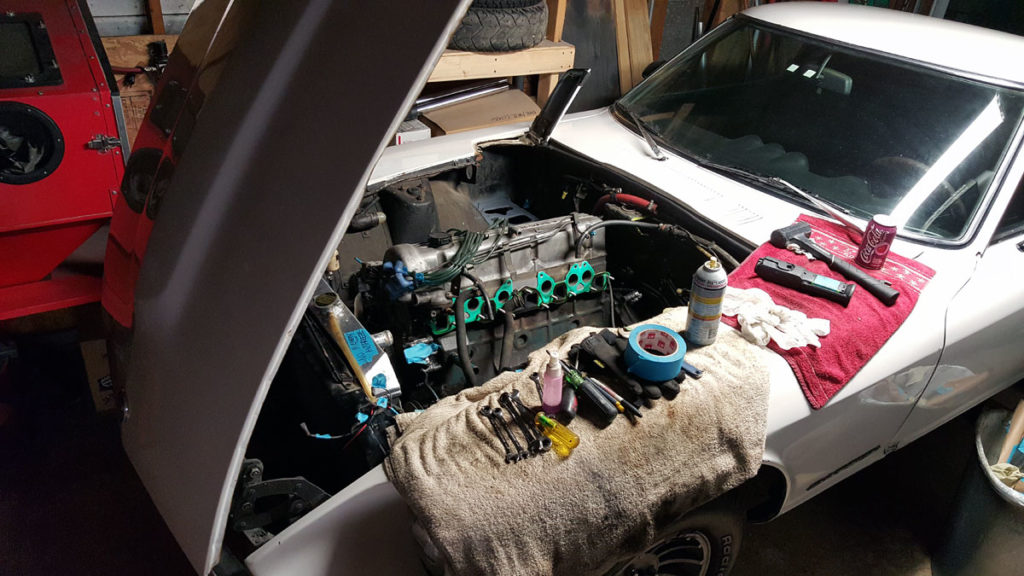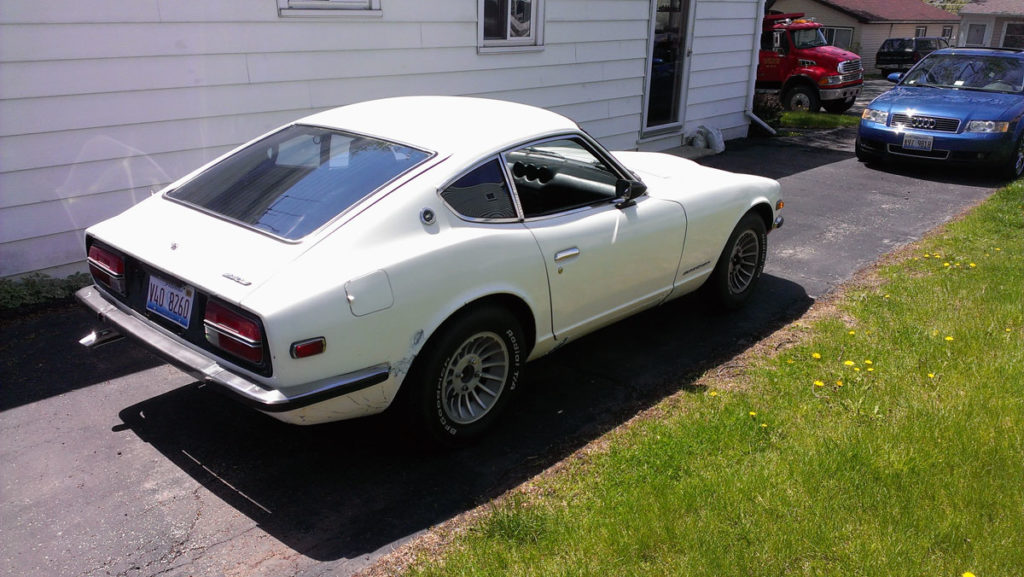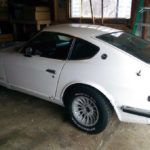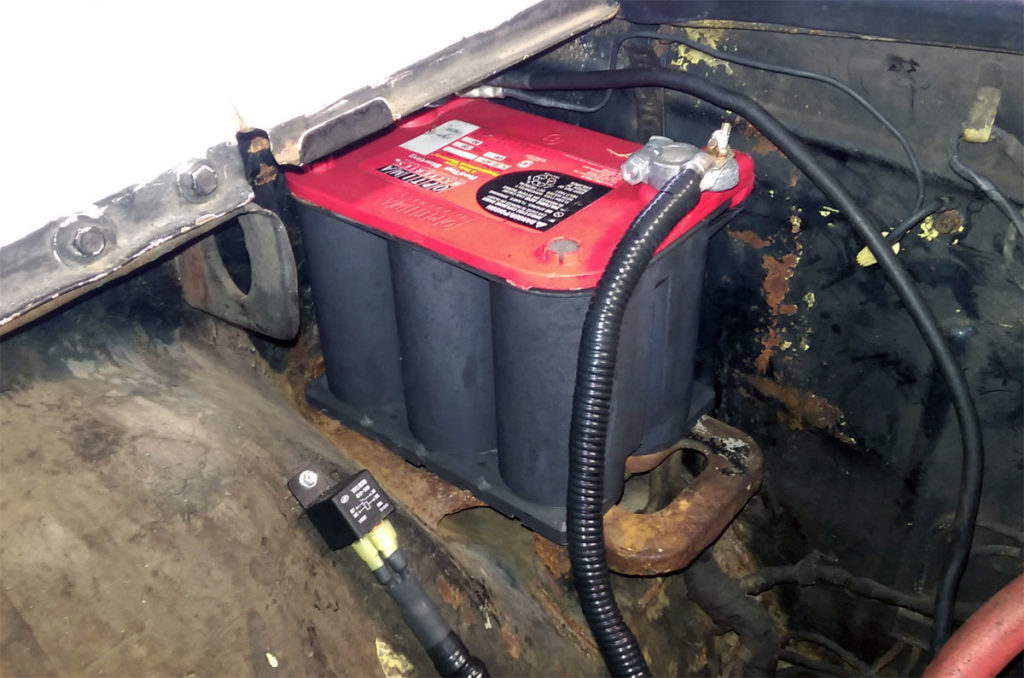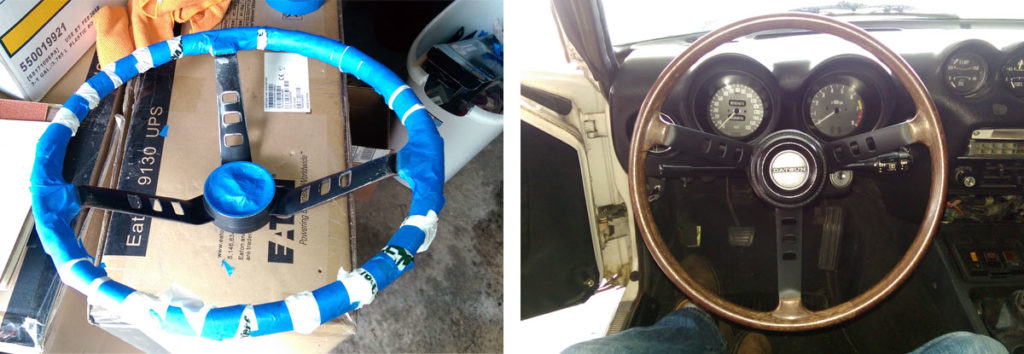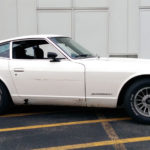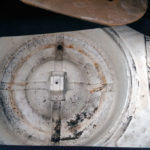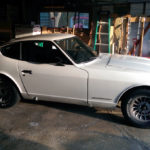At this point I wanted to take a break from wire wheeling and the floor pans arrived from Zedd Findings.

So I cut out the passengers side floor pan and discovered that the original floor pan had rusted through and then been covered with sheet metal and a very thick layer of body filler. Again, it was a mess.
I also needed to work on many other areas around where I cut out the floor pan before I fit the new one in, and this was my introduction into welding on this car.
Now I had welded in the past, quite a bit actually, but with a stick welder on fork lift parts and structural I beams. MIG welding 20 gauge steel was a bit foreign to me. But I did my best and would grind down the welds to hide my sins and make everything fit together smoothly.
After the majority of the other problem areas had been tackled, I fit the replacement floor pan into the opening I had made earlier, using self tapping sheet metal screws to hold it in place.

Now I didn’t think that pulling out each screw and making a new spot weld was enough to really hold it, so I welded along the top edge all the way around as well. Probably overkill and not exactly the right way to do it, but it was solid when I was done, that’s for sure.
You can also see that near the front of the floor pan, against the transmission tunnel, I had to bend it pretty tight to get it to fit. I probably should have done this differently too, but it did work out, even if it did look a bit “pinched”.
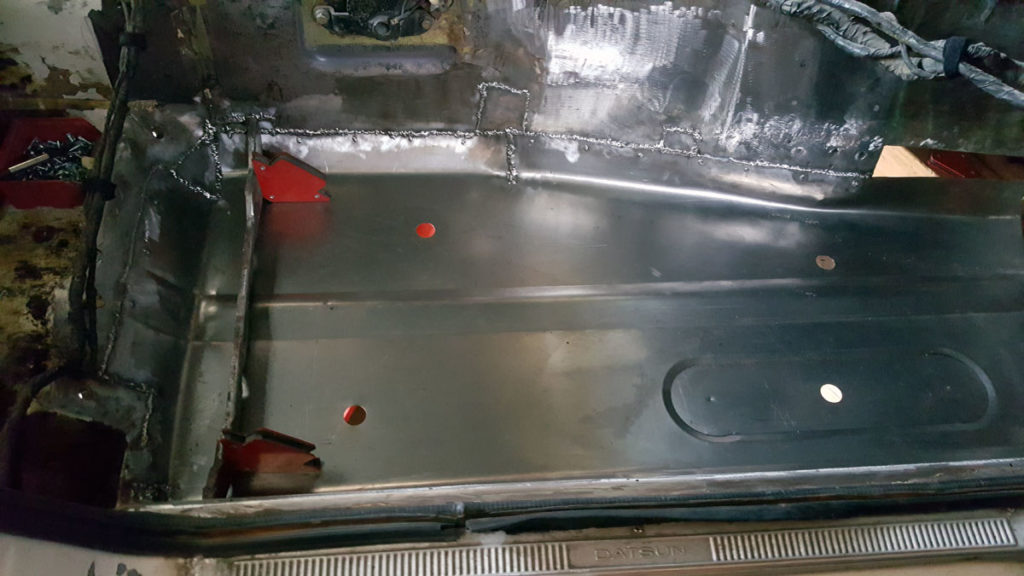
Next up were the braces and seat brackets that I had to remove from the old floor pan, clean up and fix to make work on the new floor pan.

I had my mind set on trying to re-use or rebuild everything that I could, but these were pretty far past it.
Somehow, they managed to turn out alright in the end though.
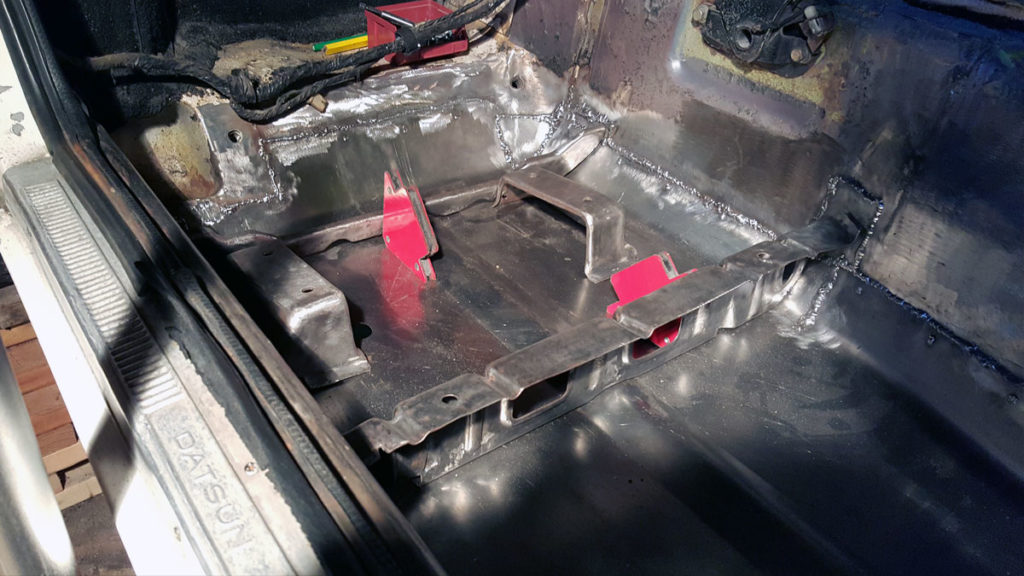
To find a particular page, use the search feature or index page.
